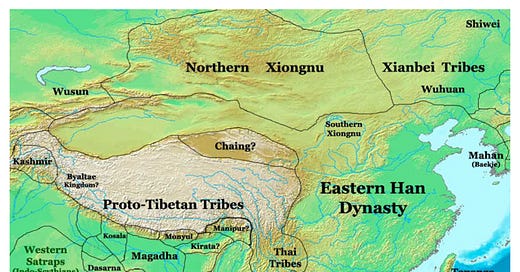To read previous newsletters in the History of Mankind, which is pretty long, you can click here. Make sure to become a paying subscriber because they are all pay-walled.
The greatest success of China’s Eastern Han emperors was propagandistic: the dynasty’s apologists managed to convince future generations of historians and politicians that the rule of a family very distantly related to the last Western Han emperors represented a restoration of rightful rule, after Wang Mang’s seizure of the imperial throne and his experiments with communism1.
The Eastern Han era was, generally speaking, a period characterized by unrest in the countryside – taxed heavily under the theory that peasants were to be tied to the land as a much safer source of income than town-dwellers – and murder in court. No emperor survived into his forties over the last 100 years of the dynasty, up to its collapse in 220 into what is called the Three Kingdoms Period.
Liu Xiu, the Eastern Han’s first ruler, known as Emperor Guangwu, eventually went down in history as the most successful of the dynasty’s rulers. He also spent the final two decades of his life, up to his death in 57, reorganizing an empire that had fallen into complete disarray through measures such as mass emancipations of peasants enslaved during the civil wars, in keeping with the Chinese dislike for an excessive reliance on slave work.
Keep reading with a 7-day free trial
Subscribe to A History of Mankind to keep reading this post and get 7 days of free access to the full post archives.




